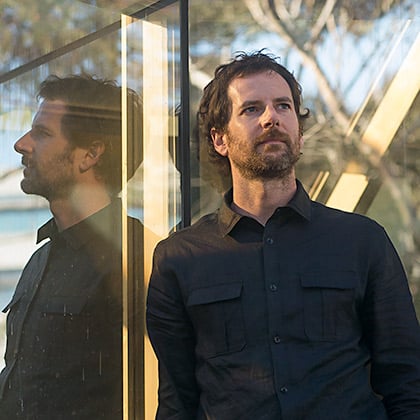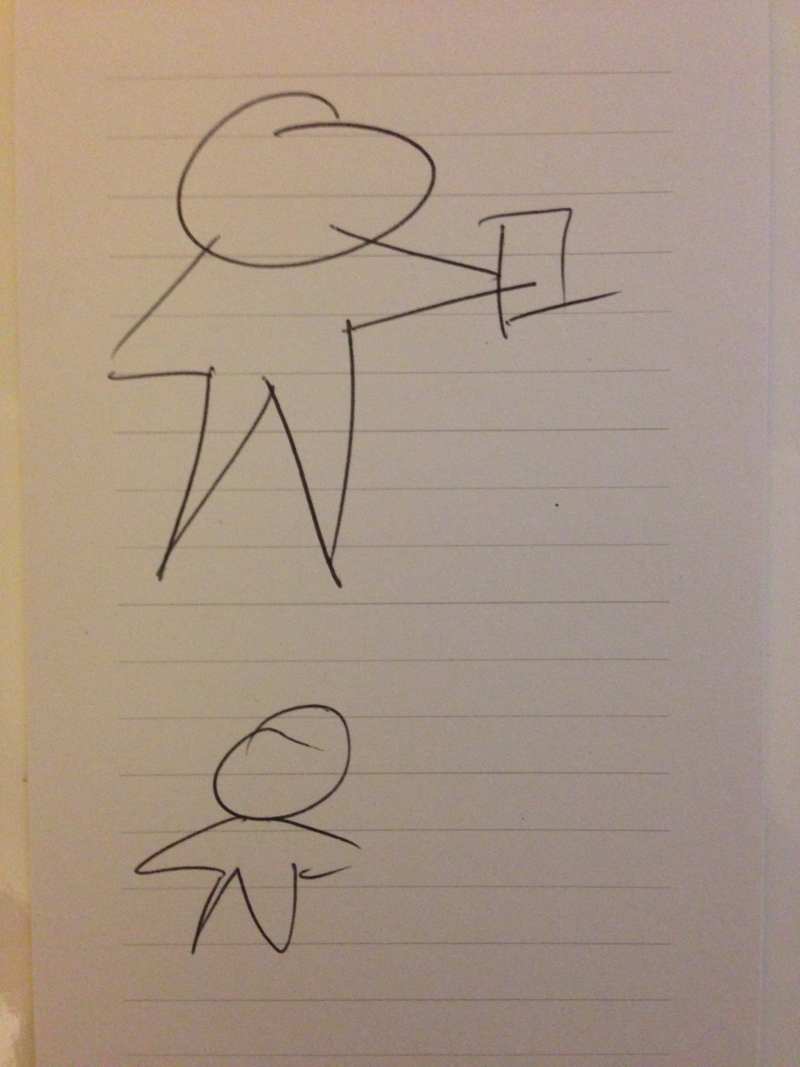Learning the Art and Science of Interaction Design
Interview with UCSD Professor Scott Klemmer on new Interaction Design Specialization offered via Coursera.
Good design is becoming increasingly more important for many products and services today.
Instagram, the popular photo-sharing app, exploded onto the scene in 2011, reaching 10M users in less than a year. What accounted for its popularity? In addition to the enabling technology of smartphones with quality cameras, observers point to many things: the ease of photo editing, simplicity of uploading, effortless sharing & commenting, a clear focus on one photo at a time in a feed, etc. Regardless of which of these constituted the magic formula, it is clear that Instagram was thoughtfully crafted and masterfully designed. Good design is becoming increasingly more important for many products and services today.
Have you heard these terms: interaction design, human-computer Interaction (HCI), user experience (UX) design, or user interface (UI) design? There are many different terms that describe how people with a product or service try to craft a positive experience for the intended user. Don’t worry too much about the terms, there is a lot of overlap in these definitions, according to Scott Klemmer, Associate Professor of Cognitive Science and Computer Science at UC San Diego. Prof. Klemmer leads a Coursera Specialization in Interaction Design, which consists of a series of six courses plus a capstone project. Charlie Chung of Class Central caught up with Prof. Klemmer at the Coursera Partners Conference in March to discuss design, how this Specialization came about, and who it is for.
UCSD is a hotbed of cognitive science-based design work. Prof. Klemmer cites some of the innovative researchers in the department, including Edwin Hutchins, James Hollan, and David Kirsh, as well as the pioneering work of Don Norman, author of The Design of Everyday Things. Prof. Klemmer is carrying on this tradition, as one of his graduate students when he was at Stanford, was Mike Krieger, a co-founder of Instagram. Which leads to how Instagram is involved in this course, but more on that later.
Good design thinking in this day and age marries together the rich findings from cognitive science with artistic creative disciplines.
Good design thinking in this day and age marries together the rich findings from cognitive science with artistic creative disciplines. Thus, design is a combination of art plus science. The best way to get feedback is through testing and collecting rigorous data. And Prof. Klemmer makes the case that the best way to learn the craft of design is through the artistic studio model. Thus we see art and science reinforcing each other throughout the design process. And this is the balance that Prof. Klemmer strives to keep in the Specialization.
The Specialization on Design
In May of 2012, Prof. Klemmer was one of the early MOOC instructors on the Coursera platform, teaching multiple iterations of a course on human-computer interaction. But there was so much to teach and learn! Thus, when the concept of Specializations were introduced, Prof. Klemmer decided to create one for interaction design—then he could properly lay out the full sequence of steps and skills needed. The seven courses in the Specialization can be taken at your own pace, and are as follows:
• Human-Centered Design: an Introduction
• Design Principles: an Introduction
• Social Computing
• Input and Interaction
• User Experience Design
• Information Design
• Designing, Running, and Analyzing Experiments
The Specialization is geared towards those who want to be designers or product managers, and covers many of the key elements in the design process, including working with design briefs, determining user needs, and developing and testing prototypes. As Prof. Klemmer describes it:
We start out with need-finding, go through rapid prototyping, make something that is higher fidelity, and test it both in-person and online. Then students can revise and iterate while polishing the design. Students will be able to experience the whole cycle in the Specialization.
We will touch on a few of these aspects below, starting with the interesting concept of “need-finding”.
Need-Finding, or the Discovery of the Unspoken
The most obvious thing to do to find out what users (or potential users) need is to simply ask them. This is the basic reasoning behind most market research techniques including interviews, surveys, and focus groups. However, some things get missed with this, because you are relying on people being cognizant of what they need. David Kelly, head of legendary design firm, IDEO, talks about an elderly woman who said that she had no problem opening her medicine pill bottles. When the researchers followed her around her house and observed her routine, they found that she opened her pill bottle tops by using a professional meat slicer…”See? No problem!” she said.
Clearly, this approach of observing behavior is a better approach at getting at deeper, latent, unconscious needs, the kind that would be quite worthwhile to address. Prof. Klemmer explains this anthropological approach and gives an example from the kitchen-tool designer OXO:
https://www.youtube.com/watch?v=dkodv2tbxe4
But once you’ve identified these deep-seated needs, how do you go about addressing them, and how do you know you’ve succeeded? That’s where prototyping comes in.
Prototyping, or Learning from Concrete Ideas
Prototypes are good ways to get feedback and learn. They are very common for physical goods. However, they are increasingly popular for non-physical goods and services as well. Prototypes are a key tool in the lean startup world, where they are referred to as MVPs (minimum viable products). And contrary to what you might think, in the design world they don’t have to be fancy—Prof. Klemmer advocates for the use of (well-fed) stick figures. He even sketched out a quick example of one during our interview.
The prototypes can later be revised and become fancier as they evolve towards higher-fidelity prototypes. This also allows for more rigorous testing, such as split testing (or ‘A/B testing’), where you randomly assign users to see different versions of an experience and see which versions do better on some pre-defined metric. This is just one in a range of informal and formal methods of testing, such as observations, interviews, and surveys. How do you know which method, if any, to use? It depends on what you are trying to learn, under what constraints. And it is again where judgment requires art plus science. And one of the best ways to develop this while you are learning is through the studio model.
The Studio Model of Education, or Guidance from the Guild
Having been trained as an artist, Prof. Klemmer considers the studio approach for artists to be a valuable pedagogical approach. In a studio model, all of the students’ works-in-progress are out in the open and can be observed by others. Prof. Klemmer explains why this can be so valuable:
One thing that characterizes novices in general is that novices have an overly narrow view of the space of possibilities. And if you get one thing out of the design thinking that we teach in the Specialization, it’s going to be how to stretch your mind and open up that space of possibilities
Prof. Klemmer applies this studio model to some degree in the Specialization, by having students submit their work at various stages, for their peers to see. Thus, students can learn from and be inspired by each other (also in a creative endeavor, it is helpful to see other work in progress to make you comfortable that your work doesn’t have to be perfect!)
A Capstone Curated by Designers
The Capstone course is a final, overarching project for those who have completed the verified certificates in the Specialization courses. It will focus on a fully designed project:
One thing that any student who completes this Specialization will be able to walk away from is a portfolio piece that they can show online. In the design world, it doesn’t matter so much whether you got an A or a B in your classes in your undergraduate career–it is much more about demonstrations of what you can do.
The Capstone project will also be developed with input from a partner famous for its design work: Instagram! In addition, some of the projects will be selected to be shown to Instagram designers for feedback. Thus, the project mimics a real design development experience, by having something you create be added to your own design portfolio, and to have the possibility of having your work be seen and evaluated by professional designers. There is no better way to learn than by doing, and Prof. Klemmer’s Specialization is ‘designed’ to help you do just that.
If you are interested in developing your design skills, you can sign up for Interaction Design, offered via Coursera.








CASSIE CRUISE
how do you think Adrian Bejan’s constructal law might influence future designers?